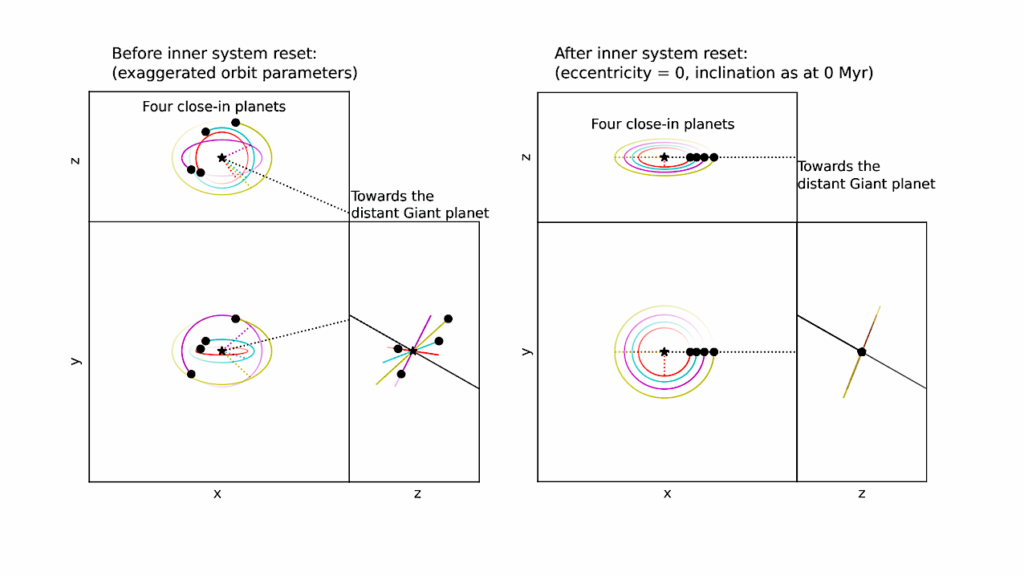Water UV-Shielding in the Terrestrial Planet-Forming Zone: Implications for Oxygen-18 Isotope Anomalies in H2-18O Infrared Emission and Meteorites

An understanding of the abundance and distribution of water vapor in the innermost region of protoplanetary disks is key to understanding the origin of habitable worlds and planetary systems.
Past observations have shown H2O to be abundant and a major carrier of elemental oxygen in disk surface layers that lie within the inner few au of the disk. The combination of high abundance and strong radiative transitions leads to emission lines that are optically thick across the infrared spectral range. Its rarer isotopologue H2-18O traces deeper into this layer and will trace the full content of the planet forming zone. In this work, we explore the relative distribution of H2-16O and H2-18O within a model that includes water self-shielding from the destructive effects of ultraviolet radiation.
In this Letter we show that there is an enhancement in the relative H2-18O abundance high up in the warm molecular layer within 0.1-10 au due to self-shielding of CO, C18O, and H2O. Most transitions of H2-18O that can be observed with JWST will partially emit from this layer, making it essential to take into account how H2O self-shielding may effect the H2O to H2-18O ratio. Additionally, this reservoir of H2-18O-enriched gas in combination with the vertical “cold finger” effect might provide a natural mechanism to account for oxygen isotopic anomalies found in meteoritic material in the solar system
Jenny K. Calahan, Edwin A. Bergin, Arthur D. Bosman
Comments: 8 pages, 4 figures, accepted to ApJ Letters
Subjects: Earth and Planetary Astrophysics (astro-ph.EP); Solar and Stellar Astrophysics (astro-ph.SR)
Cite as: arXiv:2207.04063 [astro-ph.EP] (or arXiv:2207.04063v1 [astro-ph.EP] for this version)
https://doi.org/10.48550/arXiv.2207.04063
Focus to learn more
Submission history
From: Jenny Calahan
[v1] Fri, 8 Jul 2022 18:00:02 UTC (6,245 KB)
https://arxiv.org/abs/2207.04063
Astrobiology, Astrochemistry,








